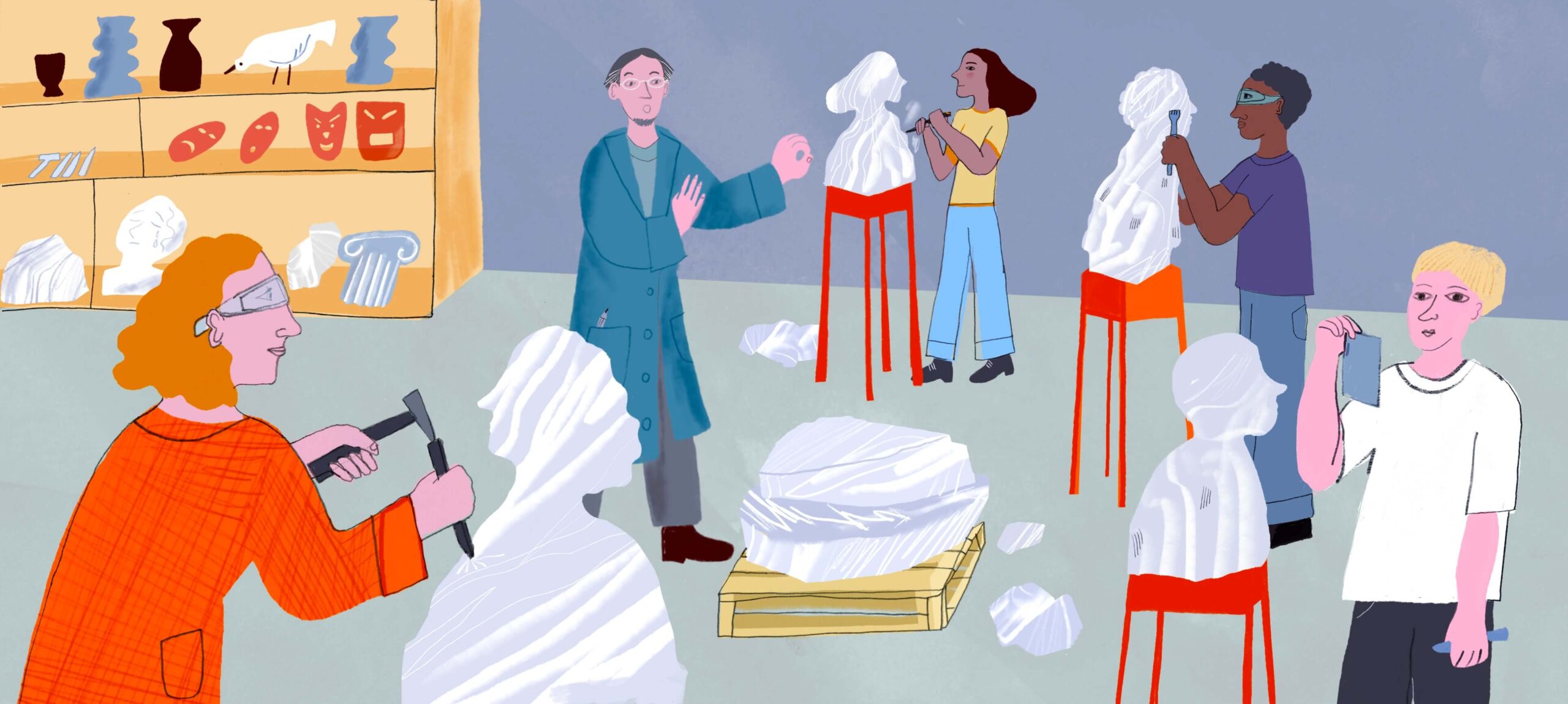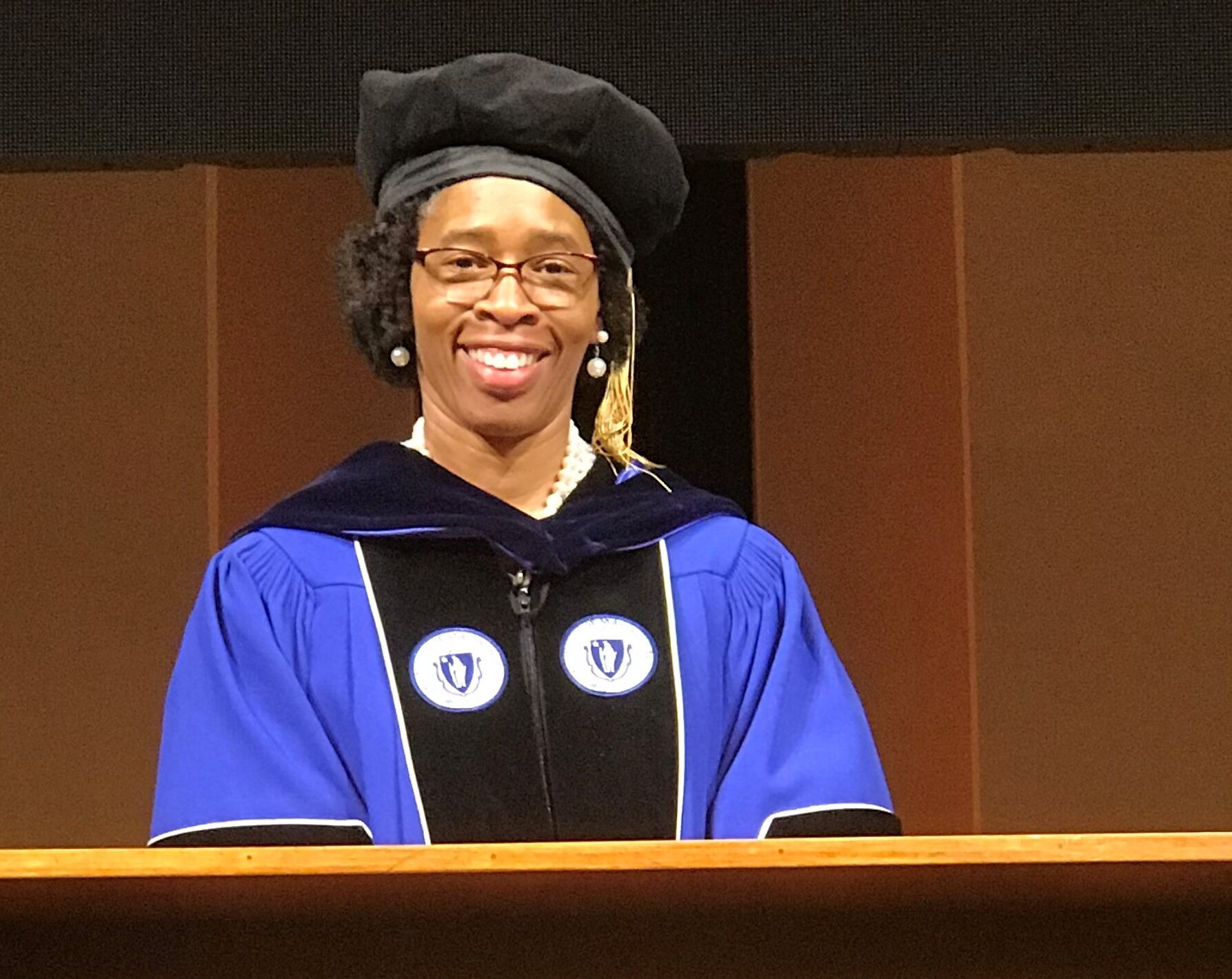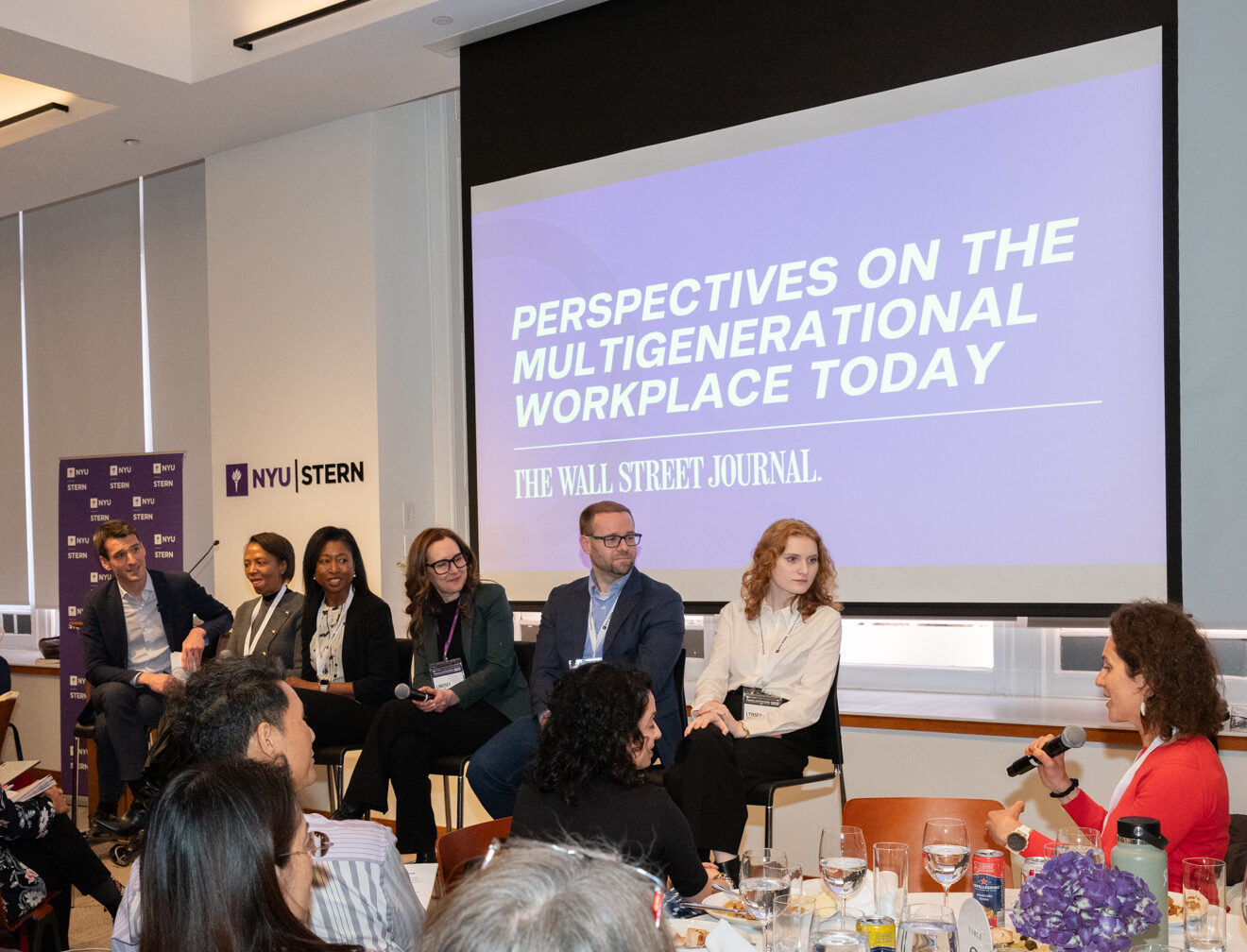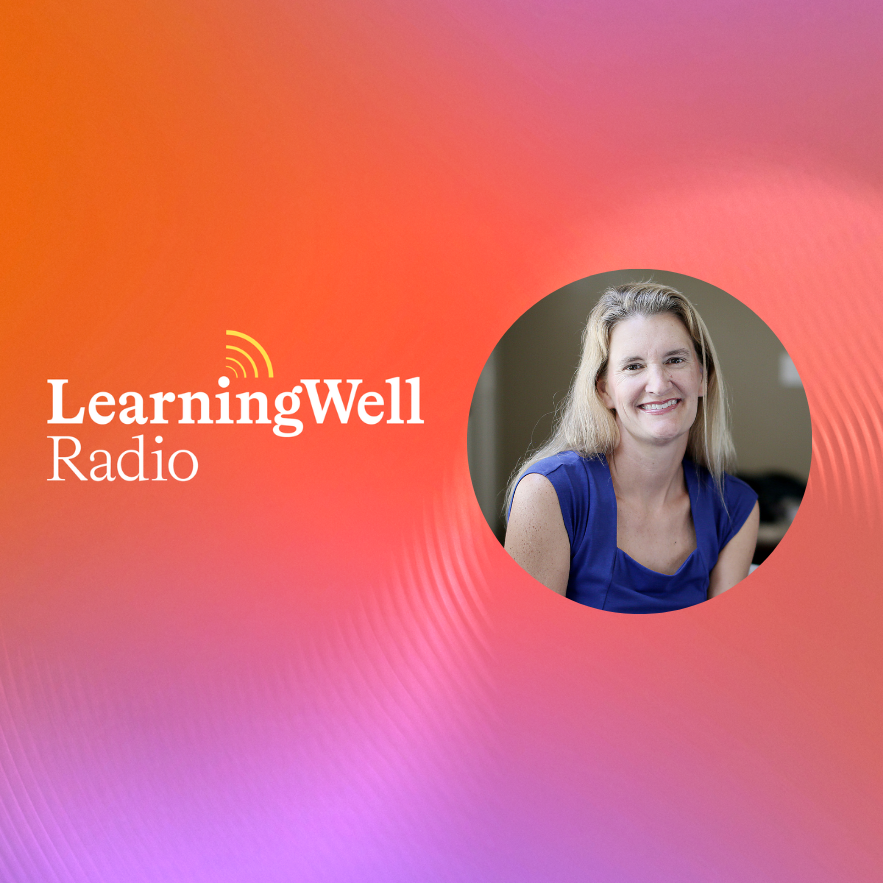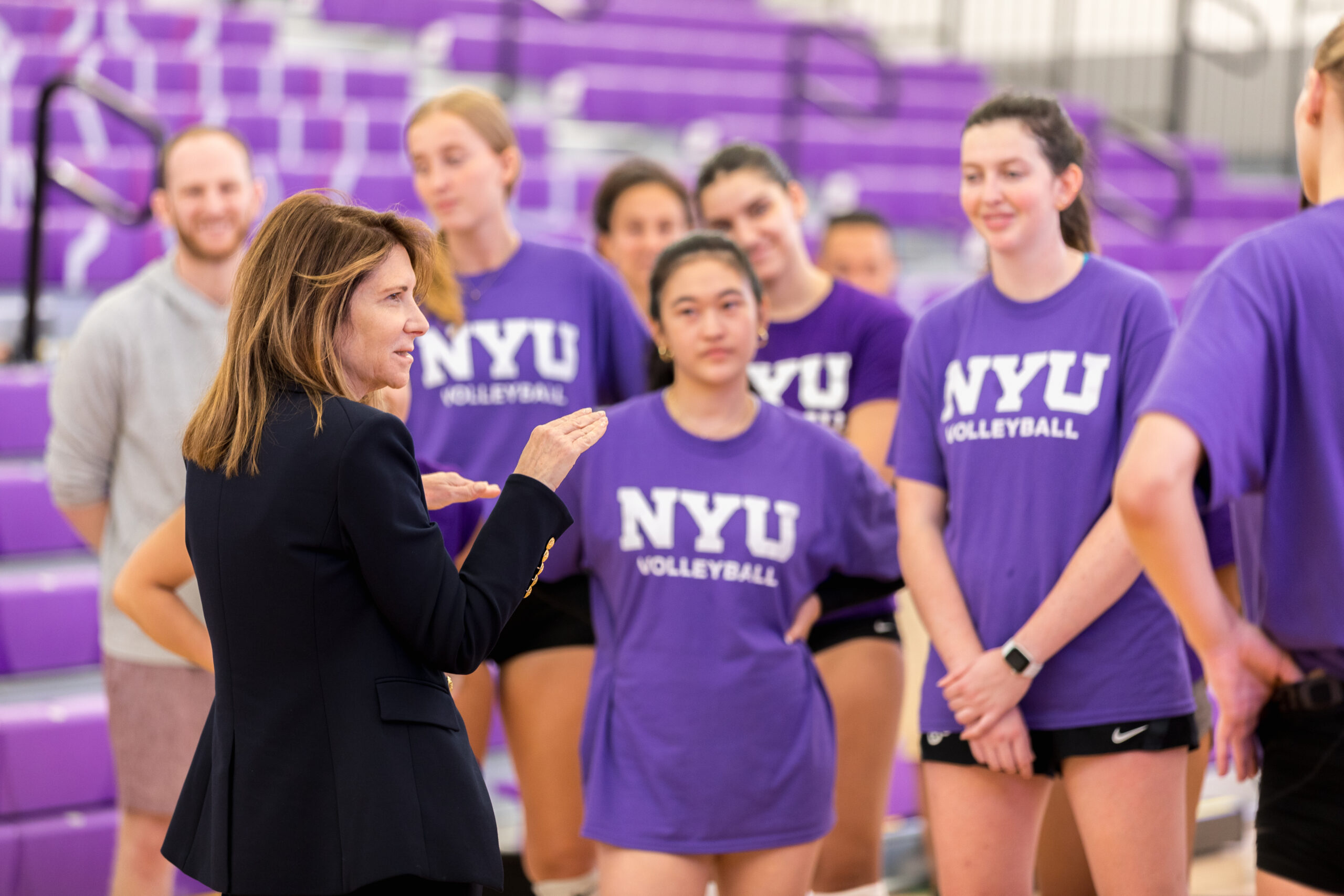In the following excerpt of his upcoming white paper, Richard Miller, president emeritus of Olin College for Engineering, lays out key traits and behaviors of “good character” that correlate with wellbeing. Teaching these qualities in the classroom, Miller suggests, may help all students thrive in life and career. How exactly to “teach” character, however, is less straightforward and will require research. The full paper, out next week, will include a full list of references to all research invoked.
There is ample evidence from multiple sources that an array of attitudes, behaviors, and beliefs correlate well with wellbeing in life, both for individuals and for societies. These include traits long associated with good character including gratitude, generosity toward others, forgiveness, humility, integrity, honesty and trustworthiness. While it may appear that these elelements of character have lost their preeiminece in a society so seemingly tolerant of their absence, the connection of personal and collective wellbeing to character may help re-establish it as something worth teaching and practicing.
There are many questions here for higher education including whether character should be among the goals of transformational education approaches, which are strongly tied to outcomes such as belonging, agency, purpose and meaning. In many cases, the evidence on character and wellbeing comes from research in positive psychology, but other fields are also involved, including medicine, political science, economics, sociology, and public safety. While this evidence is largely from correlation and may not necessarily be causative, it indicates that there are many potential educational experiences within the character domain capable of producing enhancement to lifelong wellbeing.
However, this only intensifies the need for experimentation with different pedagogical approaches to determine if and how these characteristics may be successfully “taught” or inspired in student populations in ways that result in lasting wellbeing after the college experience. In general, this research will require diligent assessment with reliable metrics that are nationally normed. As we continue to track evidence of the impact of character on wellbeing, we do so within the context of it becoming dispensable at a time when it is most urgent.
Considering Life Goals. A recent survey of millennials found that over 80% list becoming rich among their major life goals, and another 50% of those same millennials list becoming famous as another major life goal. Apparently, there is also a strong belief among college students today that becoming rich and famous will lead to a good life. This is not new.
But scientific evidence from the Harvard Study of Adult Development—one of the most comprehensive studies in history—indicates that people who invest in long-term relationships based on trust, respect, and compassion have the highest levels of wellbeing throughout life—independent of wealth, fame, or other measures of success. On the other hand, wealth and fame are actually orthogonal to happiness. They don’t make you happy or unhappy. However, the pursuit of those things at the expense of pursuing human connection makes people less happy and less healthy.
As a result, promoting early conversations with college students about what it means to create a “good life” with long-term wellbeing is likely an important preliminary step in developing learning experiences in higher education that result in improvements in long-term outcomes for alumni. Educating students about the difference between dedicating oneself to accumulating wealth and fame—or, on the other hand, seeking life-long wellbeing, which has more dimensions—may be an important step that we can take to improve long-term outcomes. Students can’t address a problem they aren’t aware of.
Although there are several competent definitions of long-term wellbeing, the most accepted may be the one adopted by Gallup (after 80 years of research) that has been used in ranking the world’s happiest countries. It involves five dimensions: career, social, financial, physical, and community wellbeing. This longitudinal Gallup data provides the only available opportunity to explore the long-term impact of learning experiences we implement today. These are obtained by correlation studies with the Gallup data to extrapolate into future decades.
However, when reviewing the evidence for character and ethics in promoting wellbeing, the lack of available longitudinal data in this area from the Gallup surveys requires that we broaden our review and consider evidence from multiple sources. This evidence is included in the current summary to illustrate what we know about good character and ethical behavior as it correlates with wellbeing.
Gratitude. Research strongly suggests that practicing gratitude is associated with improved wellbeing and mental health. Gratitude is linked to increased happiness, reduced stress, and better overall emotional wellbeing.
Research indicates that gratitude improves wellbeing in several ways, including reducing stress and anxiety by lowering stress hormones like cortisol, leading to decreased anxiety and improved mood. Gratitude also can be shown to boost self-esteem and confidence by recognizing and appreciating the positive aspects of your life that can counteract negative self-talk and foster self-acceptance. Expressing gratitude further improves relationships by strengthening bonds and fostering positive interactions. Gratitude practices can promote relaxation and reduce worries, contributing to better sleep, while improving resilience. Finally, regularly expressing gratitude can shift your focus towards the good in your life, leading to increased happiness and contentment.
Altruism and Generosity. It is not difficult to find evidence for many elements that would be considered within “good character and ethical behavior” that correlate well with a good life—altruism and generosity, for example. Evidence shows that spending money on others promotes happiness. One widely cited study showed that spending money on others produced greater happiness than accumulating more money for oneself. In addition, it showed that participants who were randomly assigned to spend money on others experienced greater happiness than those who were assigned to spend money on themselves. Another larger, more recent study reached the same empirical conclusion based on a sample size of more than 5,000 participants.
Extensive research on the science of generosity has been produced at the Greater Good Science Center at the University of California at Berkeley. The research conducted and monitored there further confirms the positive benefits of engagement in altruistic activity and generosity on health and wellbeing in several dimensions.
Forgiveness. Research shows that forgiveness can promote wellbeing in several ways. For example, forgiveness can improve mental health by reducing symptoms of depression, anxiety, and stress. It can also improve self-esteem and promote a sense of flourishing. In addition, forgiveness can improve physical health by lowering blood pressure, improving cholesterol levels, and reducing pain. It can also strengthen the immune system and improve heart health. Forgiveness can also lead to healthier relationships and can be a form of coping that helps alleviate perceptions of stress.
Forgiveness interventions can be effective in promoting mental wellbeing. For example, one study found that participants who completed a self-directed forgiveness intervention workbook saw improvements in their ability to forgive, as well as reductions in depression and anxiety symptoms. Interventions in forgiveness can involve letting go of anger, resentment, and negative past events; realizing that the best revenge is no revenge; living in the present and learning from the past; hoping and planning for the future; and acknowledging the wrongdoer as a moral agent who has failed but respecting the perpetrator’s perspective.
Humility. Humility involves acknowledging one’s limitations, accepting feedback, and being open to learning from others without excessive pride or arrogance. Research suggests that humility is strongly related to increased wellbeing and mental health, including lower rates of depression and anxiety. Humility helps buffer the effects of stress on wellbeing, leading to lower levels of stress and anxiety. Humble individuals are more likely to have a realistic understanding of their strengths and weaknesses, leading to greater self-awareness.
Integrity. Though there are unlimited interpretations of the word, “integrity” is commonly accepted to refer to people who act with authenticity and honesty by speaking the truth; presenting themselves in a genuine way with sincerity; showing no pretense; and taking responsibility for their own feelings and actions. Research indicates that integrity promotes wellbeing by fostering trust, reducing stress, enhancing job satisfaction, facilitating healthy relationships, and fostering a positive organizational culture where employees can thrive. Furthermore, studies link “strong moral character” (i.e.,integrity) with reduced risk for depression, anxiety, and cardiovascular disease.
Honesty. Research and studies suggest that honesty significantly promotes wellbeing, both mental and physical. Honesty fosters trust and strong relationships. When you are honest, you build trust with others, leading to stronger relationships with friends, family, and colleagues. This trust is crucial for building healthy and supportive relationships, which are essential for wellbeing. Honesty reduces stress and anxiety, promotes self-esteem and self-acceptance, enhances mental and emotional wellbeing, improves physical health, and promotes openness and communication. However, there are situations in which being completely honest may result in hurting someone’s feelings, or in the case of speaking truth to power, might bring retribution.
Trustworthiness. Research indicates trustworthiness is strongly linked to improved wellbeing, both individually and within communities. Trust fosters a sense of safety and security, which is fundamental for mental and emotional wellbeing. When individuals trust others, they feel less anxious and more confident in their relationships and interactions. Trust promotes healthy relationships and social connections; contributes to better mental health outcomes; can improve physical health; is essential for building and maintaining healthy communities; and is particularly relevant in healthcare settings and in the workplace. In summary, trustworthiness contributes to a greater sense of security, belonging, and wellbeing, both for individuals and communities.
Influence on Community
Most of the evidence presented above is derived from studies of wellbeing in individuals that might result from attitudes, behaviors, and beliefs derived from good character and ethical behavior. However, there are similar correlations between these factors at the macro or societal level, too. Research shows that the social environment significantly impacts ethical behavior. Individuals are influenced by the norms, values, and expectations prevalent within their social circles, which can shape their perceptions of what is considered right or wrong. An illustration of the macro correlations is provided by comparing the list of the world’s happiest countries, determined by Gallup using their wellbeing index, with the list of the world’s most corrupt countries, as determined by the Corruption Perceptions Index published annually by Transparency International. It is striking that these rankings reveal an obvious inverse correlation across the globe between the happiest countries and the most corrupt countries. For example, Denmark and Finland are ranked at the top of the happiest countries by Gallup, and they are also ranked as the least corrupt countries in the independent ranking by Transparency International.
An Imperative for Higher Education
The evidence presented here makes clear that several elements of good character and ethical behavior are well correlated with enhanced health and wellbeing in both individuals and communities and society at large. These elements may therefore be considered candidates for introducing new learning experiences in higher education aimed at improving life-long wellbeing in college graduates. This opens the door to investigate faculty-driven innovations in higher education that are intended to promote the development of these characteristics in college graduates in hope that this will contribute to improved long-term outcomes for all enrolled students in the future.
The evidence presented here makes clear that several elements of good character and ethical behavior are well correlated with enhanced health and wellbeing in both individuals and communities and society at large.
However, much remains to be determined. While there clearly are many new possible learning experiences that promise to enhance wellbeing, the magnitude of the impact of each of these—both immediate and long-term—is, as yet, undetermined. Some may prove to be more effective than anything that we know about at this point, but many others are likely to prove insignificant in improving wellbeing later in life, depending on how they are defined, taught, and promoted. The only way to determine this is through experimentation and assessment.
It is our hope that faculty at many institutions will take the lead in developing pilot projects and experiments to explore these issues and share their findings broadly so everyone may learn what works best. This includes not only experimentation with the core ideas behind the intervention but also the pedagogical process used to implement them at scale in a variety of academic institutions.
This will inevitably involve research and experimentation in pedagogical innovation. For example, it is not clear how to “teach” honesty and integrity so that these values and behaviors are internalized and treasured by all graduates for a lifetime. Assessment will play an indispensable role in guiding the process of developing these interventions to the point of demonstrated effectiveness. Only when effectiveness can be demonstrated by objective data shared with others can we be assured that programs are achieving their intended purpose. Ideally, the assessments will be based on nationally normed tools that correlate with long-term wellbeing, such as the longitudinal data developed by Gallup over decades of measurement in this area.
In making the case for the inclusion of character and ethics in higher education towards improved wellbeing, it would be careless not to state the context for which we make the argument. It is fair to say that each of the pillars we have explored here—including integrity, truth, humility, and altruism—are declining within the collective tissue of our society today. One example is the recent report of the decline of effectiveness of student honor codes at some of our best universities. The paucity of what character scholars call “moral exemplars” is particularly disturbing. The most effective defense against such erosion of character and ethics in society is provided by strong and consistent attention to character formation in the young. Higher education has an opportunity to help build character and instill ethical behavior in its students for the benefit of their long-term wellbeing and that of society overall.
